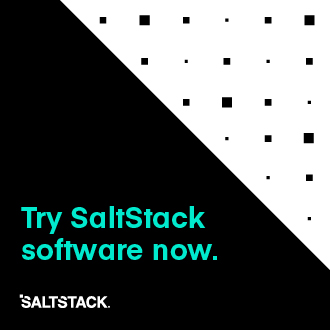Venafi Tools for Salt¶
Introduction¶
First, you need to configure the master file. This is because
all module functions require either a configured api_key (for Cloud) or
a ttp_user with a tpp_password and a base_url (for Trust Platform).
For Venafi Cloud:
venafi:
api_key: abcdef01-2345-6789-abcd-ef0123456789
base_url: "https://cloud.venafi.example.com/" (optional)
If you don't have a Venafi Cloud account, you can sign up for one on the enrollment page.
For Venafi Platform:
venafi:
base_url: "https://tpp.example.com/"
tpp_user: admin
tpp_password: "Str0ngPa$$w0rd"
trust_bundle: "/opt/venafi/bundle.pem"
It is not common for the Venafi Platform's REST API (WebSDK) to be secured using a certificate issued by a publicly trusted CA, therefore establishing trust for that server certificate is a critical part of your configuration. Ideally this is done by obtaining the root CA certificate in the issuing chain in PEM format and copying that file to your Salt Master (e.g. /opt/venafi/bundle.pem). You then reference that file using the 'trust_bundle' parameter as shown above.
For the Venafi module to create keys and certificates it is necessary to enable external pillars. This is done by adding the following to the /etc/salt/master file:
ext_pillar:
- venafi: True
Runner Functions¶
request¶
This command is used to enroll a certificate from Venafi Cloud or Venafi Platform.
minion_idID of the minion for which the certificate is being issued. Required.
dns_nameDNS subject name for the certificate. Required if
csr_pathis not specified.csr_pathFull path name of certificate signing request file to enroll. Required if
dns_nameis not specified.zoneVenafi Cloud zone ID or Venafi Platform folder that specify key and certificate policy. Defaults to "Default". For Venafi Cloud, the Zone ID can be found in the Zone page for your Venafi Cloud project.
org_unitBusiness Unit, Department, etc. Do not specify if it does not apply.
orgExact legal name of your organization. Do not abbreviate.
locCity/locality where your organization is legally located.
stateState or province where your organization is legally located. Must not be abbreviated.
countryCountry where your organization is legally located; two-letter ISO code.
key_passwordPassword for encrypting the private key.
The syntax for requesting a new certificate with private key generation looks like this:
salt-run venafi.request minion.example.com dns_name=www.example.com \
country=US state=California loc=Sacramento org="Company Name" org_unit=DevOps \
zone=Internet key_password=SecretSauce
And the syntax for requesting a new certificate using a previously generated CSR looks like this:
salt-run venafi.request minion.example.com csr_path=/tmp/minion.req zone=Internet
show_cert¶
This command is used to show last issued certificate for domain.
dns_nameDNS subject name of the certificate to look up.
salt-run venafi.show_cert www.example.com
list_domain_cache¶
This command lists domains that have been cached on this Salt Master.
salt-run venafi.list_domain_cache
del_cached_domain¶
This command deletes a domain from the Salt Master's cache.
domainsA domain name, or a comma-separated list of domain names, to delete from this master's cache.
salt-run venafi.del_cached_domain www.example.com
Transfer certificate to a minion¶
To transfer a cached certificate to a minion, you can use Venafi pillar.
Example state (SLS) file:
/etc/ssl/cert/www.example.com.crt:
file.managed:
- contents_pillar: venafi:www.example.com:cert
- replace: True
/etc/ssl/cert/www.example.com.key:
file.managed:
- contents_pillar: venafi:www.example.com:pkey
- replace: True
/etc/ssl/cert/www.example.com-chain.pem:
file.managed:
- contents_pillar: venafi:www.example.com:chain
- replace: True

